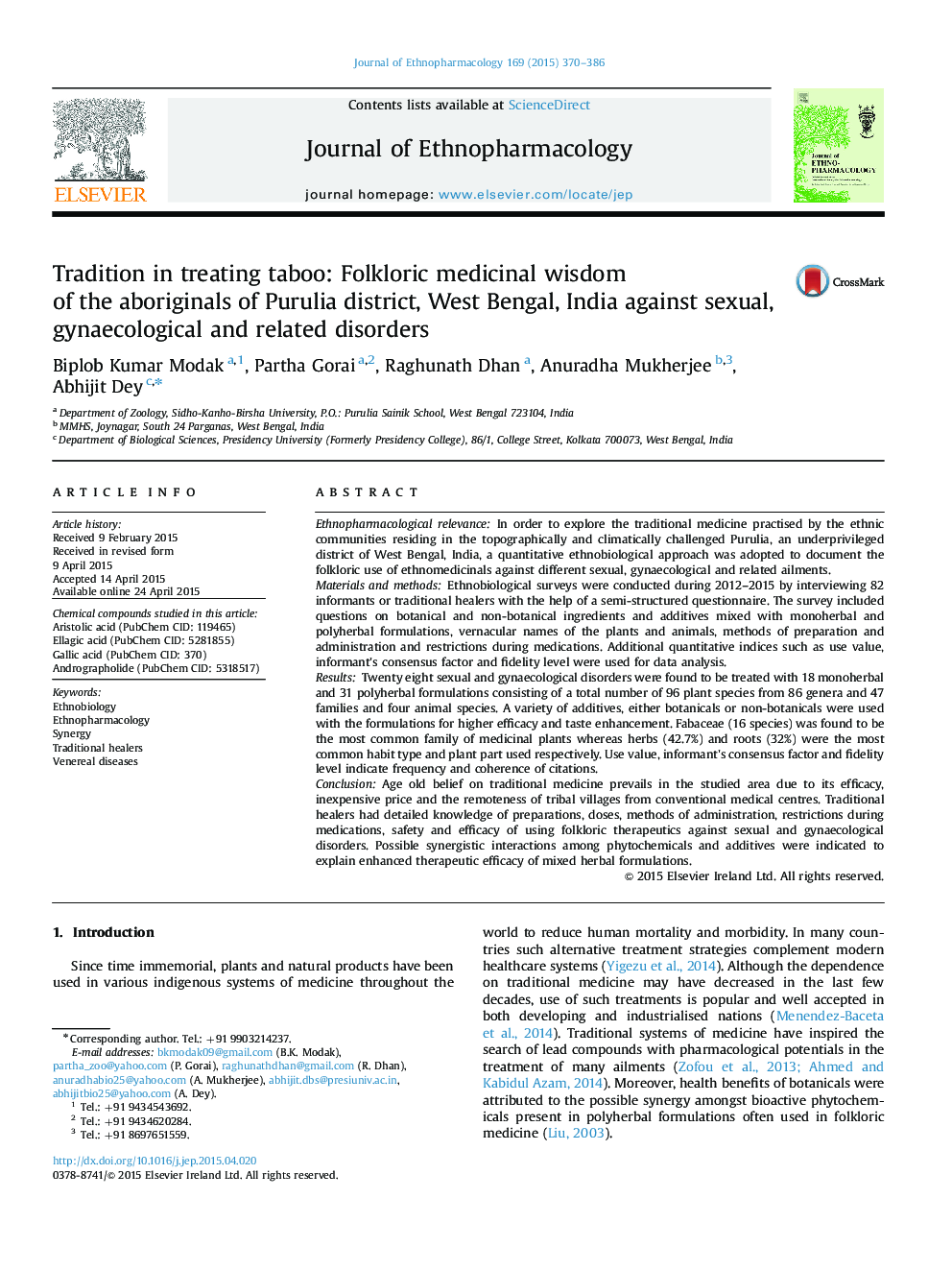| کد مقاله | کد نشریه | سال انتشار | مقاله انگلیسی | نسخه تمام متن |
|---|---|---|---|---|
| 2545001 | 1560393 | 2015 | 17 صفحه PDF | دانلود رایگان |

Ethnopharmacological relevanceIn order to explore the traditional medicine practised by the ethnic communities residing in the topographically and climatically challenged Purulia, an underprivileged district of West Bengal, India, a quantitative ethnobiological approach was adopted to document the folkloric use of ethnomedicinals against different sexual, gynaecological and related ailments.Materials and methodsEthnobiological surveys were conducted during 2012–2015 by interviewing 82 informants or traditional healers with the help of a semi-structured questionnaire. The survey included questions on botanical and non-botanical ingredients and additives mixed with monoherbal and polyherbal formulations, vernacular names of the plants and animals, methods of preparation and administration and restrictions during medications. Additional quantitative indices such as use value, informant׳s consensus factor and fidelity level were used for data analysis.ResultsTwenty eight sexual and gynaecological disorders were found to be treated with 18 monoherbal and 31 polyherbal formulations consisting of a total number of 96 plant species from 86 genera and 47 families and four animal species. A variety of additives, either botanicals or non-botanicals were used with the formulations for higher efficacy and taste enhancement. Fabaceae (16 species) was found to be the most common family of medicinal plants whereas herbs (42.7%) and roots (32%) were the most common habit type and plant part used respectively. Use value, informant׳s consensus factor and fidelity level indicate frequency and coherence of citations.ConclusionAge old belief on traditional medicine prevails in the studied area due to its efficacy, inexpensive price and the remoteness of tribal villages from conventional medical centres. Traditional healers had detailed knowledge of preparations, doses, methods of administration, restrictions during medications, safety and efficacy of using folkloric therapeutics against sexual and gynaecological disorders. Possible synergistic interactions among phytochemicals and additives were indicated to explain enhanced therapeutic efficacy of mixed herbal formulations.
Figure optionsDownload high-quality image (237 K)Download as PowerPoint slide
Journal: Journal of Ethnopharmacology - Volume 169, 1 July 2015, Pages 370–386